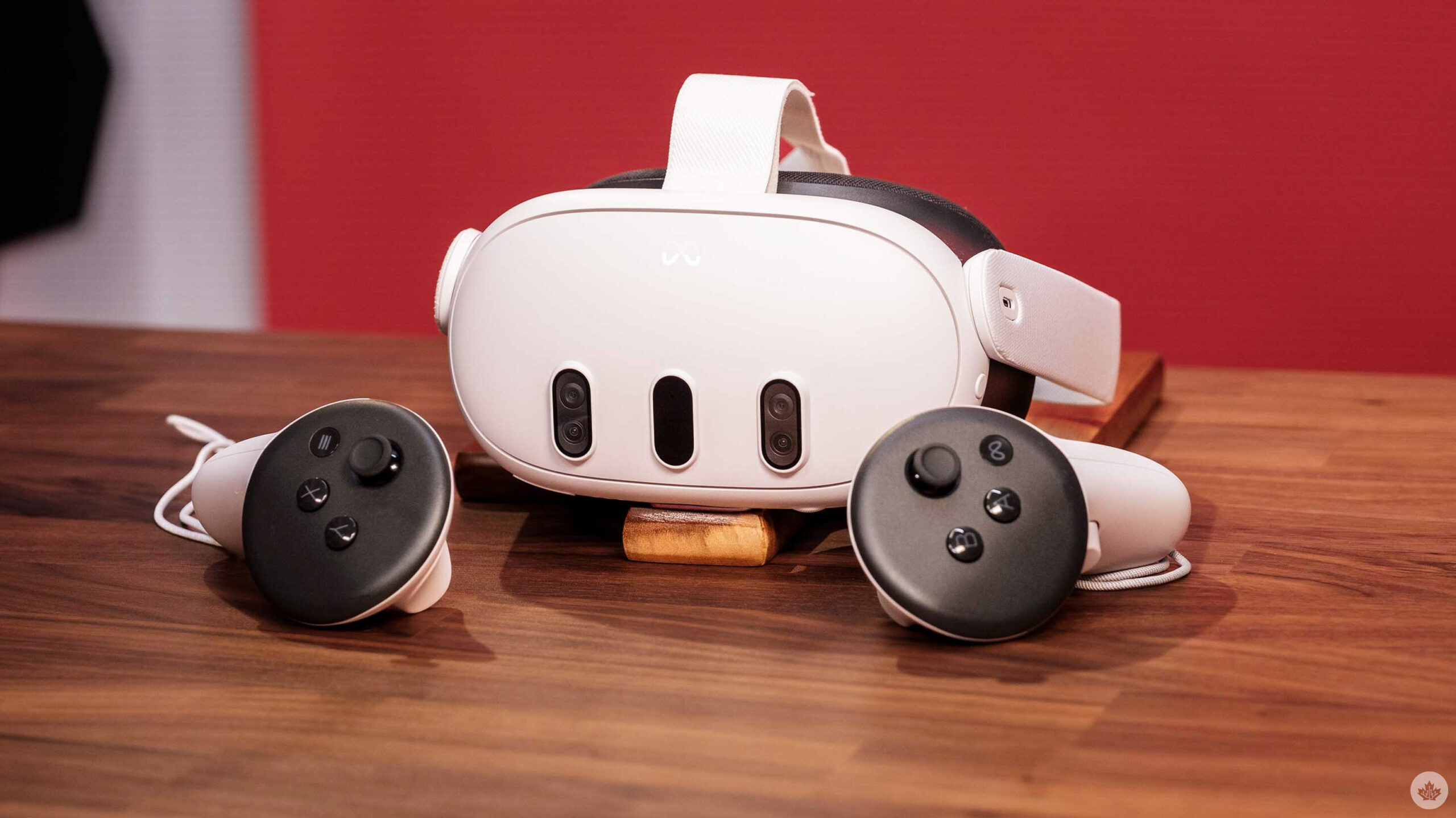
I have a bad habit of falling off of virtual reality (VR).
While I’ve always been a big believer in the technology, I often find myself getting really into a headset for a brief period and then putting it down for other things. That happened most recently with last year’s PlayStation VR2 (although a big part of that stems from Sony’s lack of support for it), but that was also the case with the Quest 2 (which I briefly owned during COVID lockdown) and the original PlayStation VR.
With so many great games and movies coming out in recent years, I just haven’t felt compelled to invest much time into VR — until now, at least. Over the past month, I’ve been playing around with the Meta Quest 3, and I’ve absolutely fallen in love with the whole experience. The diversity of games and apps on the headset is staggering, making it perfectly complementary to my regular entertainment consumption.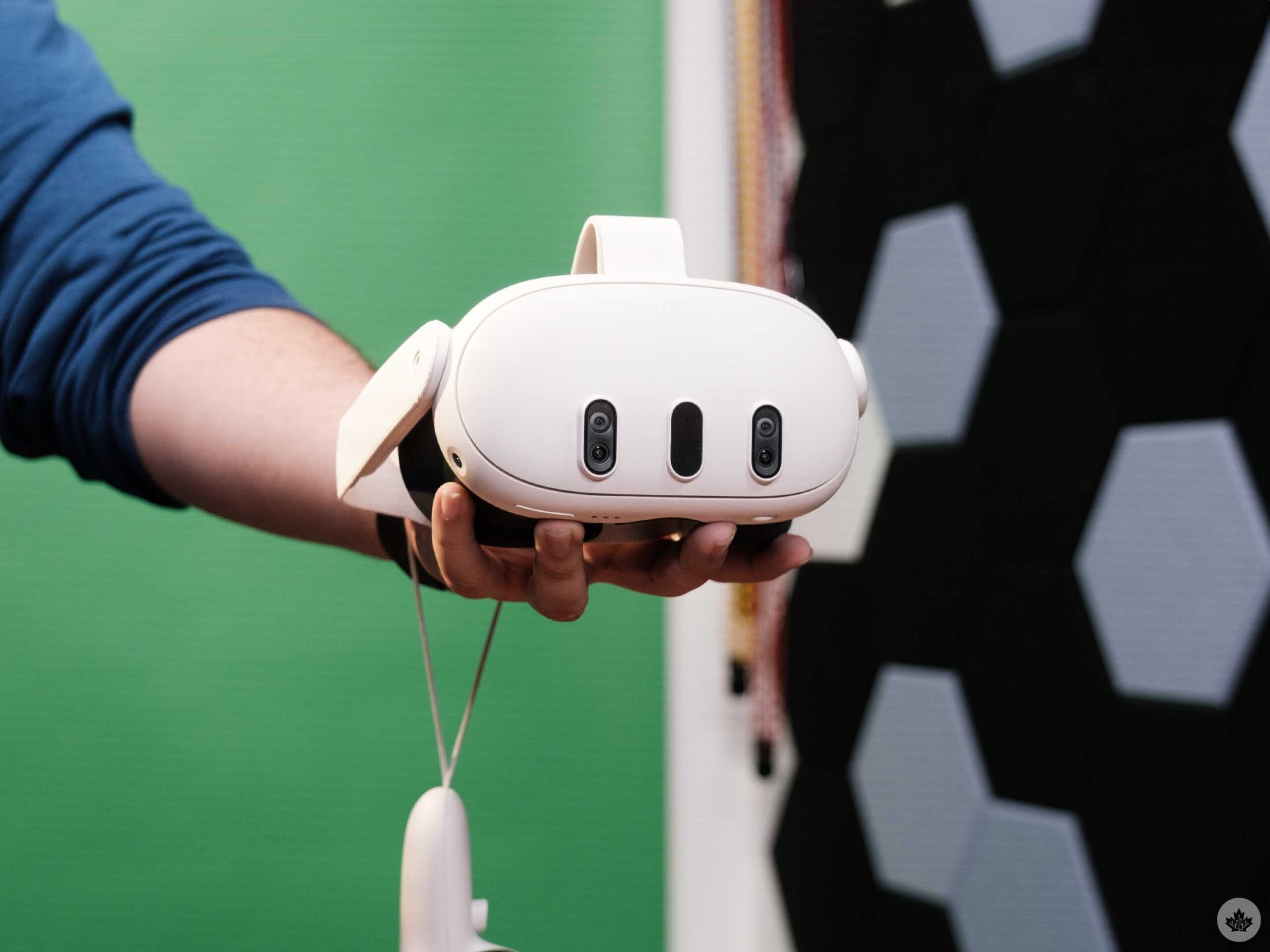 First and foremost, that comes down to the standalone nature of the headset. Unlike the PS5’s PlayStation VR2 or high-end PC headsets like Lenovo’s HTC Vive, the Quest 3 doesn’t require any additional (and often expensive) hardware. Not only does that make it far more affordable, but it also makes it so much more approachable. Right off the bat, not having to worry about anything besides the headset itself means it’s much simpler to pick up and use and, therefore, quite appealing to me. The Quest 3 is also the most comfortable VR headset I’ve ever worn (40 percent thinner than its predecessor, no less) and its intuitive Touch controllers only add to that. Further, I just prefer the form factor of the Quest 3 Touch controllers; other headsets, like the Quest 2 and PS VR2, have weird, unsightly rings on their controllers that are thankfully absent here.
First and foremost, that comes down to the standalone nature of the headset. Unlike the PS5’s PlayStation VR2 or high-end PC headsets like Lenovo’s HTC Vive, the Quest 3 doesn’t require any additional (and often expensive) hardware. Not only does that make it far more affordable, but it also makes it so much more approachable. Right off the bat, not having to worry about anything besides the headset itself means it’s much simpler to pick up and use and, therefore, quite appealing to me. The Quest 3 is also the most comfortable VR headset I’ve ever worn (40 percent thinner than its predecessor, no less) and its intuitive Touch controllers only add to that. Further, I just prefer the form factor of the Quest 3 Touch controllers; other headsets, like the Quest 2 and PS VR2, have weird, unsightly rings on their controllers that are thankfully absent here.
I’ve found myself appreciating this ease of use even more amid the near unrelenting stream of games we’re getting on console and PC, many of which centre around massive bloated open worlds or tedious live service business models. Sometimes, you don’t want to invest in such big experiences, especially after a long work day or getting back home from the gym. And while I once viewed putting on a VR headset as being its own tiring investment, it’s that aforementioned content variety that makes it worth picking up each time. Whether I want to invest hours into some of the substantial experiences or 20 or 30 minutes in the more bite-sized ones, the Quest 3’s robust catalogue offers a great deal of flexibility.
A strong games library led by Asgard’s Wrath 2
The biggest reason I put down the PS VR2 is because there just isn’t a whole lot to do on it. Outside of Horizon: Call of the Mountain at launch, Sony hasn’t released any other brand-new first-party VR titles. (Gran Turismo 7‘s VR mode is admittedly fantastic, but it was an update to an existing game. Instead, it’s relied on an assortment of third-party games — some of which are solid, admittedly, like the superpowered shooter Synapse — to carry the headset. Therein lies the problem — if Sony won’t commit to the headset, why should anyone else?
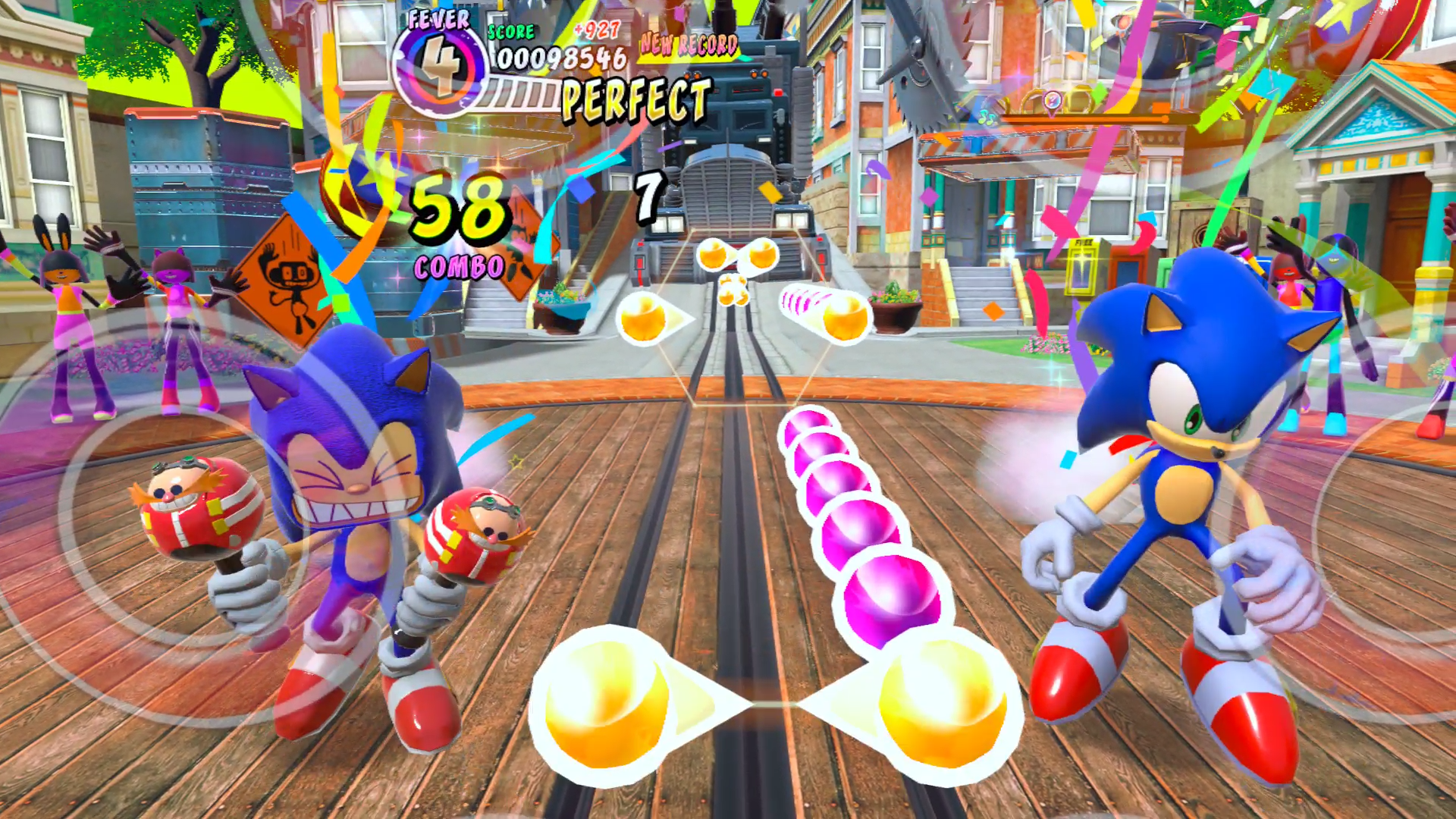
Samba de Amigo slaps. Image credit: Sega
On the flip side, the Quest 3 offers many of the same types of experiences, as well as a bunch more, making it more enticing right off the bat. That starts with the games. Unlike the PS VR2, the Quest 3 supports backwards compatibility, so I can play all of my old VR games at no additional cost. Getting immediate access to VR staples I’d already purchased, like Beat Saber and Vancouver-based Cloudhead’s Pistol Whip, is wonderful and only accentuates the content library issues on PS VR2. (While some developers support free upgrades to PS VR2 versions of games, like Beat Saber, that only applies in certain cases, and the majority of the original PS VR’s catalogue otherwise remains unplayable on its successor.) Outside of Beat Saber, I also spent a lot of time in Samba de Amigo: Party Central; the chaotic little minigames mixed in with the rhythm mechanics, coupled with the mix of licensed songs and Sonic the Hedgehog tracks like “Escape From the City,” made it an absolute blast. Likewise, Assassin’s Creed Nexus is surprisingly great.
The Quest 3 also gains access to hundreds of additional games through Xbox Cloud Gaming. With a Game Pass membership, you can stream all of the service’s catalogue directly to your headset in a virtual theatre space. Truthfully, though, this experience is a bit of a mixed bag. Some online games, like Halo Infinite, worked surprisingly well, maintaining a solid resolution and framerate and allowing me to get several kills. On the flip side, Fortnite was completely unplayable for me; some matches had seconds of lag, while others were so blurry I couldn’t properly make out enemies in the distance.
That said, single-player games all worked quite well. The photorealistic Forza Horizon 5 and Toronto-made Far Cry 6 looked crisp, and the audio particularly pops within my miniature theatre. Starfield, a game I really didn’t like, also held up well, even with Bethesda’s penchant for rough, buggy games. Hell, even something like last year’s excellent Hi-Fi Rush, a rhythm-based action game focused on timed inputs, suffered minimal latency at the worst of times and let me fully jam out to the beat. Ultimately, Xbox Cloud Gaming certainly won’t be most people’s main way of playing Xbox titles, but having that option is undeniably impressive and most welcome.
The 100-plus native VR games, plus the hundreds of Game Pass titles, give the Quest 3 a significant catalogue even in its first few months. That alone trumps the PS VR2 for me, and that’s before we factor in Meta’s killer app, which Sony’s device is sorely lacking. Sure, Horizon Call of the Mountain is solid, but it’s not exactly a game I would say is a must-play, and Gran Turismo 7 and Resident Evil Village, while splendid in VR, are still wonderful non-VR experiences on traditional hardware. Where HTC Vive has Half-Life Alyx and the original PS VR had Astro Bot: Rescue Mission, the PS VR2 doesn’t have any brand-new game that truly wows you. The Quest 3, however, already has that: Asgard’s Wrath 2.
You may have seen the reviews where outlets like IGN gave it a 10/10 score. And sure enough, once I got my hands on Asgard’s Wrath 2, I was completely blown away. This is a breathtakingly vast open-world action-RPG offering dozens upon dozens of hours of content, and it’s given for free to all Quest 3 buyers until the end of March. It’s not one of those short-but-sweet VR experiences — this is more akin to Skyrim in terms of scope. In fact, it’s so dense that I’ve barely scratched the surface, but I’m already impressed. After a quick recap of the events of the first game (which I knew nothing about), I got to interact with recognizable Norse gods like Thor and Odin before facing off against a massive winged beast using only a blade, God of War-style.
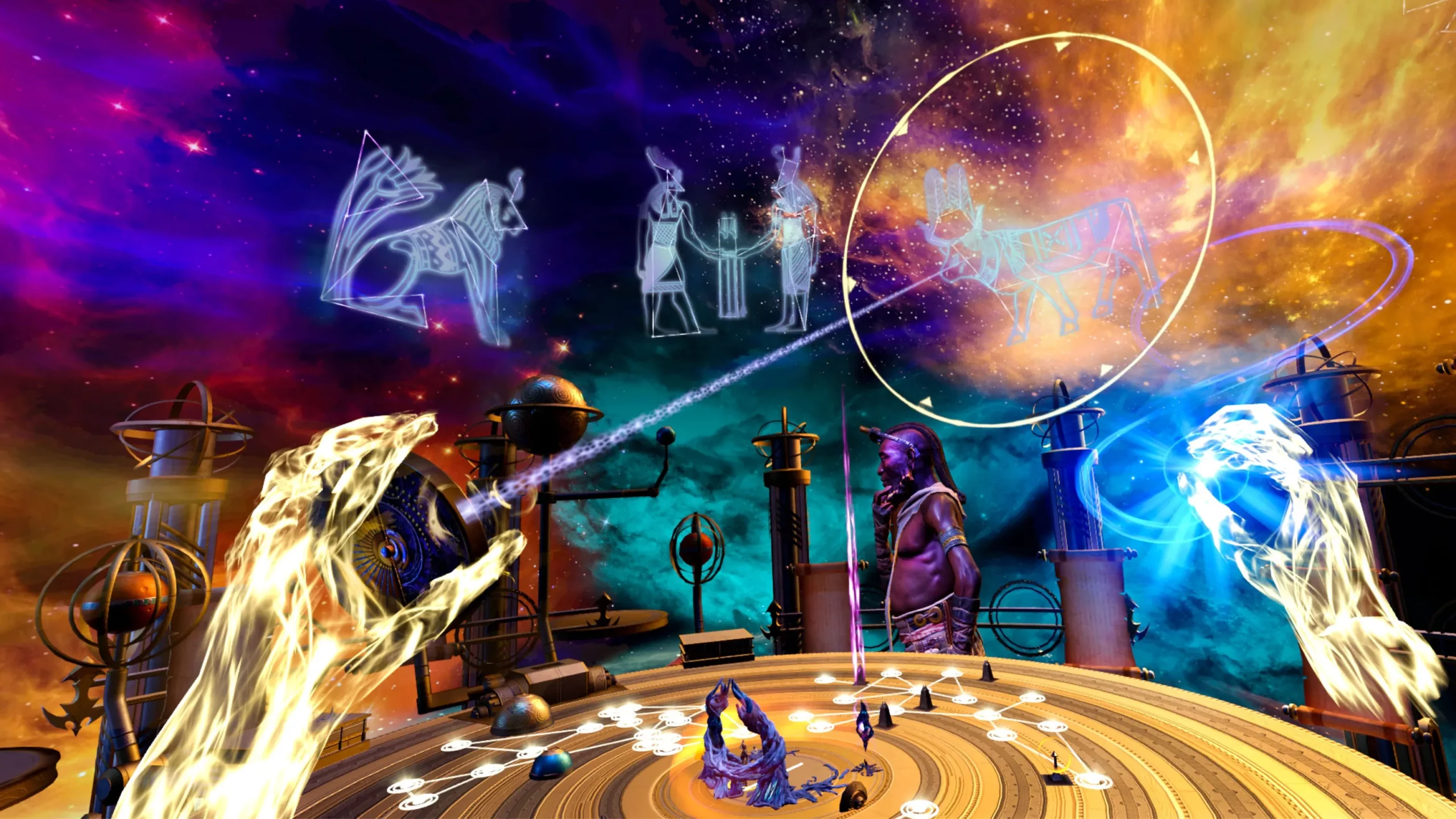
Image credit: Sanzaru Games
From there, the game shifts into a fascinating Egyptian setting that has you controlling multiple characters (each with their own skill trees), exploring tombs, dodging traps and acquiring new abilities (like an ethereal rope with which you can swing and tether to enemies). The fact that all of this is playable entirely within VR is mind-blowing, and it’s easily worth the price of admission for a Quest 3. Considering most people (myself included) won’t spend several hours at a time in the headset, you could realistically devote your Quest 3 usage pretty much exclusively to Asgard’s Wrath 2 and be fully satisfied.
But that’s the thing: the Quest 3 still has so much more to offer.
Mixed reality provides even more variety
One of the key selling points of the Quest 3 is its mixed reality (MR) functionality, allowing you to bring virtual characters and objects into the real world. Meta previously only offered this in its far more expensive Quest Pro headset, so the Quest 3 allows for a much more affordable entry point into those kinds of experiences. And boy, are they cool.
In Lego Bricktales, you can have holographic overlays of the minifigs and blocky objects in the real world, making you feel like a Tony Stark-like overlord as you manipulate them. In Ghostbusters: Rise of the Ghost Lord, Stay Puft rips the roof off of your home and sends his ghostly goons in for all sorts of chaos. Ocean Rift VR submerges your home underwater and has sharks and other wildlife swimming around you. Demeo recreates the table-top RPG experience in your living room. I’ll also give a shoutout to the upcoming Stranger Things VR, which I played at Meta Connect; using hand-tracking, you can wield wicked telekinetic powers to hurl and crush creatures that crawl through portals from the Upside Down in your living room. A real highlight of the Quest 3 experience has been discovering how developers are leveraging MR in unique ways outside of just shooting experiences.
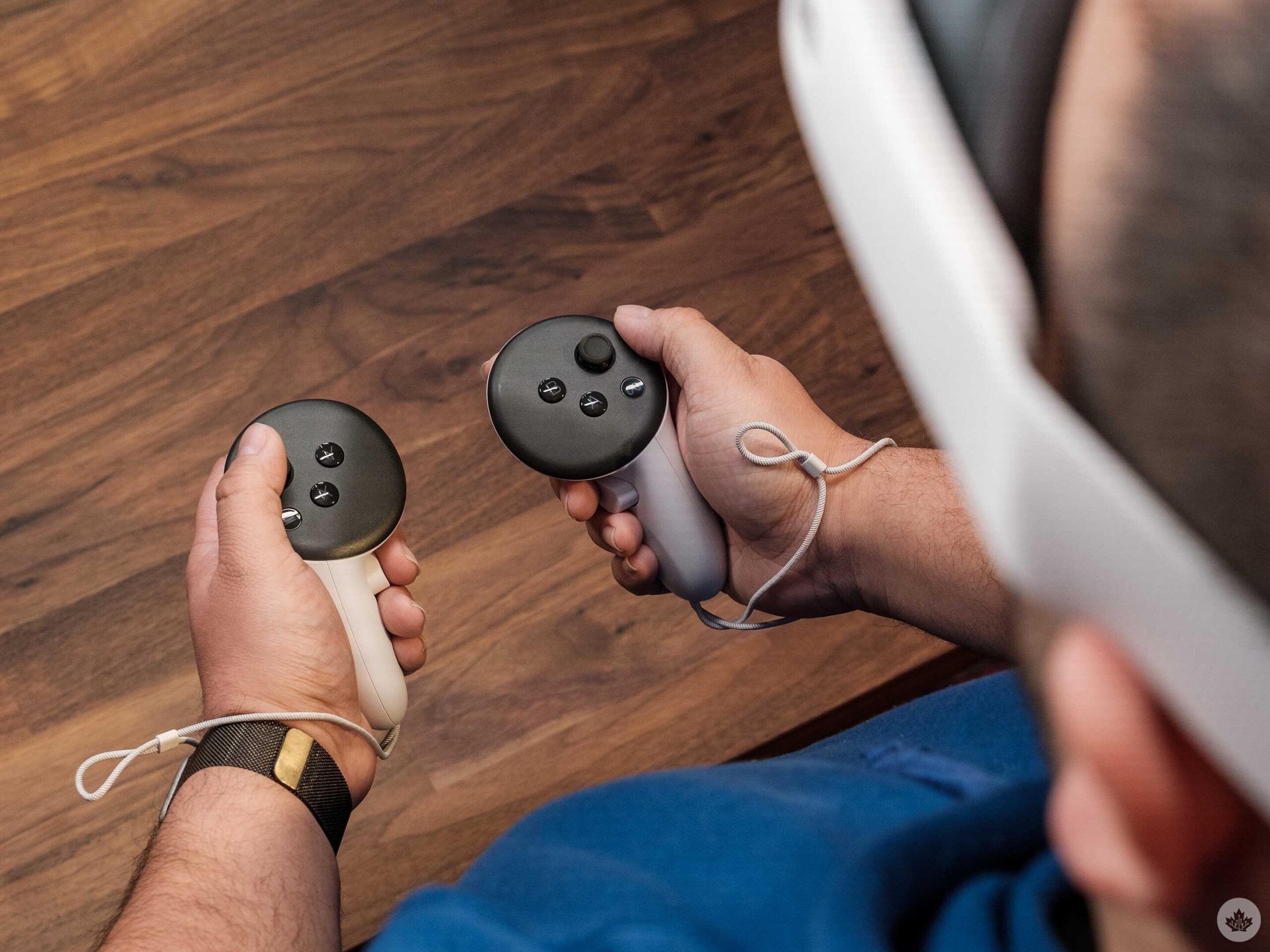 At the same time, even something overplayed, like zombies, can become that much more interesting when in MR. Drop Dead: The Cabin, a wave-based zombie survival experience, is reasonably fun in online co-op, but I especially liked its optional ‘Home Invasion’ MR mode. After you use the Touch controllers to hand-draw doors and windows in your living space, the game will start and zombies will start trying to break through these barriers. While it sounds gimmicky, there’s something undeniably unnerving about seeing places of comfort become zombie-filled death traps, and it makes the act of moving around to shoot and hack at the fiends even more tactile.
At the same time, even something overplayed, like zombies, can become that much more interesting when in MR. Drop Dead: The Cabin, a wave-based zombie survival experience, is reasonably fun in online co-op, but I especially liked its optional ‘Home Invasion’ MR mode. After you use the Touch controllers to hand-draw doors and windows in your living space, the game will start and zombies will start trying to break through these barriers. While it sounds gimmicky, there’s something undeniably unnerving about seeing places of comfort become zombie-filled death traps, and it makes the act of moving around to shoot and hack at the fiends even more tactile.
The ability to jump between standard VR games and those that support MR adds even more value to the Quest 3, and it’s ensured that I’ll keep coming back for more.
Worlds beyond gaming
The reason I originally got the Quest 2 was to exercise from home in the early days of the pandemic. For that reason, I had some familiarity with Quest apps, but now that I’ve spent more time in the ecosystem, I was taken aback by how much variety there is here. Yes, you have your (surprisingly wide) array of fitness apps ranging from Supernatural and FitXR (which now includes Zumba) to the sports-focused Gym Class and martial arts-inspired Les Mills XR Bodycombat + Dance. Some of these, like Les Mills, also support MR, although I don’t bother using that for fitness since I’m more concentrated on just completing the workout.
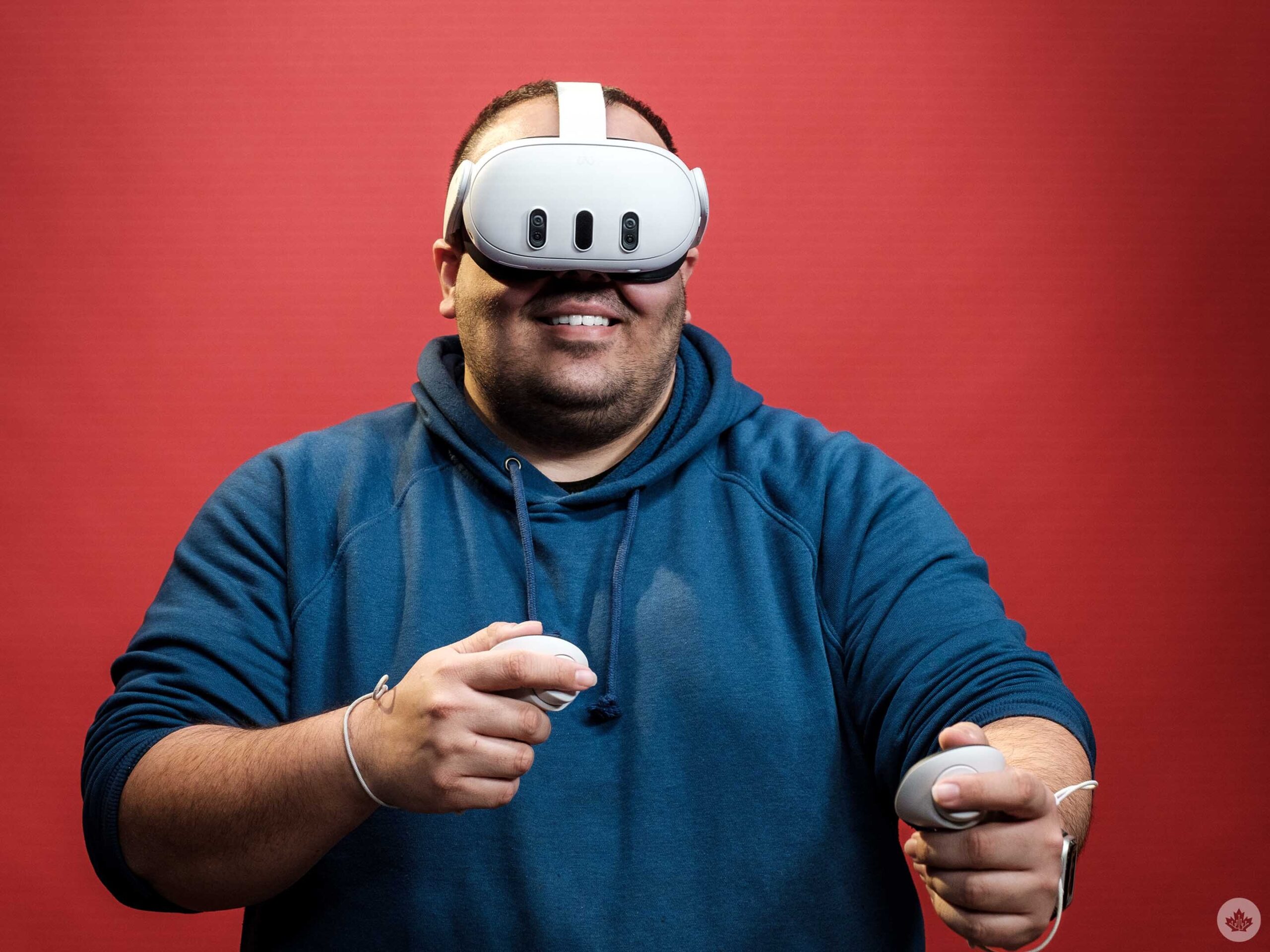 But the real enjoyment came from finding the other kinds of apps on the Quest 3. One of the biggest problems with the PS VR2 is that it’s almost entirely game-focused, outside of a few media apps. On the one hand, that makes sense with the PlayStation 5’s core purpose, but it also limits the kinds of experiences you can get on it. I was pleasantly surprised, then, to dive into Horizon Worlds.
But the real enjoyment came from finding the other kinds of apps on the Quest 3. One of the biggest problems with the PS VR2 is that it’s almost entirely game-focused, outside of a few media apps. On the one hand, that makes sense with the PlayStation 5’s core purpose, but it also limits the kinds of experiences you can get on it. I was pleasantly surprised, then, to dive into Horizon Worlds.
The MMO-like platform allows users to visit all kinds of different themed VR spaces and try out different kinds of content. While you can now also access that on mobile, I find it more interesting in VR; outside of the headset, I’d rather do something else. But within it, there’s something novel about this shared world experience. I liked that I could warp to The Soapstone Comedy Club area for a live comedy show, hop over to the NBA world to sit courtside during a game and then head to a Coachella-esque hub for a performance by BTS’ Jungkook.
And those are just the general entertainment worlds. Some of the more gamified content can get endearingly goofy, like a bamboo cutting area in which I’ll confess I spent far too much time pestering loud-mouthed tweens by whacking them. On the flip side, there’s a Universal Studios one that hauntingly recreates the theme park’s iconic Halloween Horror Nights experience right to your headset.
 Now, Horizon Worlds is far from perfect. Some of the live-streamed content, like the NBA games, obviously can suffer from grainy quality, depending on your connection. Many of these worlds can also feel like ghost towns, and reports of churning player counts don’t instill much confidence. Therefore, Horizon Worlds, in its current state, certainly won’t sell anyone on Meta’s push for the “metaverse.”
Now, Horizon Worlds is far from perfect. Some of the live-streamed content, like the NBA games, obviously can suffer from grainy quality, depending on your connection. Many of these worlds can also feel like ghost towns, and reports of churning player counts don’t instill much confidence. Therefore, Horizon Worlds, in its current state, certainly won’t sell anyone on Meta’s push for the “metaverse.”
But for me, I care less about the idea of creating an avatar and engaging with other people, anyway. (I even played most of FFXIV solo.) For that reason, the relatively unpopulated areas didn’t bother me; I just enjoy messing around with some of that stuff here and there.
Of course, there are other apps besides Horizon Worlds, including watching Netflix and Prime Video in your own virtual theatre, Lost Recipes to learn more about foreign dishes, Brink Traveler to visit different global landmarks and productivity-focused offerings like Excel and PowerPoint.
Are these things I would do regularly or even more than once? For some, the answer would certainly be “no.” But considering there’s so much on offer here, I view the Quest 3’s catalogue not unlike an all-you-can-eat restaurant. None of it is necessarily the best food you’ve ever had, and some you won’t go back for second helpings, but there’s enough there that you’ll find something to whet your appetite.
Snap back to (virtual reality)
 Nowadays, there’s so much entertainment competing for our time, whether it’s games, movies, TV shows or books, and that’s before you factor in other hobbies or, you know, just doomscrolling. Honestly, I sometimes find it all a tad overwhelming; being spoilt for choice can lead me to be indecisive and simply turn to waste time on my phone. That feeling becomes even more pronounced when it’s something that requires a larger investment, like, say, the Yakuza/Like a Dragon games or The Sopranos TV series, two pieces of entertainment I’d love to get into.
Nowadays, there’s so much entertainment competing for our time, whether it’s games, movies, TV shows or books, and that’s before you factor in other hobbies or, you know, just doomscrolling. Honestly, I sometimes find it all a tad overwhelming; being spoilt for choice can lead me to be indecisive and simply turn to waste time on my phone. That feeling becomes even more pronounced when it’s something that requires a larger investment, like, say, the Yakuza/Like a Dragon games or The Sopranos TV series, two pieces of entertainment I’d love to get into.
This is why I’ve come to really love the Quest 3. Whether I want something meatier (the stellar Asgard’s Wrath 2), something to play in quick bursts (the frenetic Beat Saber or Samba de Amigo), something technically impressive (MR experiences like Lego Bricktales and Demeo), or just laidback (VR concerts and comedy shows), the Quest 3 has it covered.
Not everything is perfect, of course, especially with the rough-around-the-edges Horizon Worlds. The roughly two-hour battery life isn’t great for longer sessions, either. But the sheer breadth of content on display here, coupled with its refreshingly wireless setup, means it’s a joy to pick up and use. It won’t replace my main forms of entertainment (gaming consoles), but it also doesn’t have to; instead, it complements them nicely.
Now, if you need me, I’ll be jamming out in Samba de Amigo.
The Meta Quest 3 starts at $649 in Canada.
MobileSyrup utilizes affiliate partnerships. These partnerships do not influence our editorial content, though we may earn a commission on purchases made via these links, helping fund the journalism provided free on our website.
MobileSyrup may earn a commission from purchases made via our links, which helps fund the journalism we provide free on our website. These links do not influence our editorial content. Support us here.


